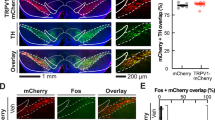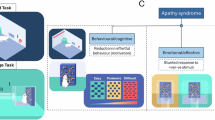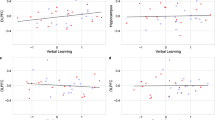Abstract
Chronic exposure to antipsychotic medications can persistently change brain dopamine systems. Most studies on the functional significance of these neural changes have focused on motor behavior and few have addressed how long-term antipsychotic treatment might influence dopamine-mediated reward function. We asked, therefore, whether a clinically relevant antipsychotic treatment regimen would alter the incentive motivational properties of a reward cue. We assessed the ability of a Pavlovian-conditioned stimulus to function as a conditioned reward, as well as to elicit approach behavior in rats treated with haloperidol, either continuously (achieved via subcutaneous osmotic minipump) or intermittently (achieved via daily subcutaneous injections). Continuous, but not intermittent, treatment enhanced the ability of amphetamine to potentiate the conditioned reinforcing effects of a cue associated with water. This effect was not related to differences in the ability to attribute predictive value to a conditioned stimulus (as measured by conditioned approach behavior), but was potentially linked to the development of behavioral supersensitivity to amphetamine and to augmented amphetamine-induced immediate early-gene expression (c-fos and Nur77) in dorsal striatopallidal and striatonigral cells. By enhancing the ability of reward cues to control behavior and by intensifying dopamine-mediated striatopallidal and striatonigral cell activity, standard (ie, continuous) antipsychotic treatment regimens might exacerbate drug-seeking and drug-taking behavior in schizophrenia. Achieving regular but transiently high antipsychotic levels in the brain (as modeled in the intermittent condition) might be a viable option to prevent these changes. This possibility should be explored in the clinic.
Similar content being viewed by others
Log in or create a free account to read this content
Gain free access to this article, as well as selected content from this journal and more on nature.com
or
References
Abi-Dargham A, Laruelle M (2005). Mechanisms of action of second generation antipsychotic drugs in schizophrenia: insights from brain imaging studies. Eur Psychiatry 20: 15–27.
Arroyo M, Markou A, Robbins TW, Everitt BJ (1999). Acquisition, maintenance and reinstatement of intravenous cocaine self-administration under a second-order schedule of reinforcement in rats: effects of conditioned cues and continuous access to cocaine. Psychopharmacology (Berl) 140: 331–344.
Badiani A, Oates MM, Day HE, Watson SJ, Akil H, Robinson TE (1999). Environmental modulation of amphetamine-induced c-fos expression in D1 vs D2 striatal neurons. Behav Brain Res 103: 203–209.
Beaudry G, Langlois MC, Weppe I, Rouillard C, Levesque D (2000). Contrasting patterns and cellular specificity of transcriptional regulation of the nuclear receptor nerve growth factor-inducible B by haloperidol and clozapine in the rat forebrain. J Neurochem 75: 1694–1702.
Beninger RJ, Hoffman DC, Mazurski EJ (1989). Receptor subtype-specific dopaminergic agents and conditioned behavior. Neurosci Biobehav Rev 13: 113–122.
Berretta S, Robertson HA, Graybiel AM (1992). Dopamine and glutamate agonists stimulate neuron-specific expression of Fos-like protein in the striatum. J Neurophysiol 68: 767–777.
Berridge KC, Robinson TE (1998). What is the role of dopamine in reward: hedonic impact, reward learning, or incentive salience? Brain Res Brain Res Rev 28: 309–369.
Cenci MA, Kalen P, Mandel RJ, Wictorin K, Bjorklund A (1992). Dopaminergic transplants normalize amphetamine- and apomorphine-induced Fos expression in the 6-hydroxydopamine-lesioned striatum. Neuroscience 46: 943–957.
Chambers RA, Krystal JH, Self DW (2001). A neurobiological basis for substance abuse comorbidity in schizophrenia. Biol Psychiatry 50: 71–83.
Chesi AJ, Feasey-Truger KJ, Alzheimer C, ten Bruggencate G (1995). Dopamine autoreceptor sensitivity is unchanged in rat nucleus accumbens after chronic haloperidol treatment: an in vivo and in vitro voltammetric study. Eur J Neurosci 7: 2450–2457.
Compton DR, Johnson KM (1989). Effects of acute and chronic clozapine and haloperidol on in vitro release of acetylcholine and dopamine from striatum and nucleus accumbens. J Pharmacol Exp Ther 248: 521–530.
Danna CL, Elmer GI (2010). Disruption of conditioned reward association by typical and atypical antipsychotics. Pharmacol Biochem Behav 96: 40–47.
de Wit H, Stewart J (1981). Reinstatement of cocaine-reinforced responding in the rat. Psychopharmacology (Berl) 75: 134–143.
Ericson H, Radesater AC, Servin E, Magnusson O, Mohringe B (1996). Effects of intermittent and continuous subchronic administration of raclopride on motor activity, dopamine turnover and receptor occupancy in the rat. Pharmacol Toxicol 79: 277–286.
Farde L, Nordstrom AL, Wiesel FA, Pauli S, Halldin C, Sedvall G (1992). Positron emission tomographic analysis of central D1 and D2 dopamine receptor occupancy in patients treated with classical neuroleptics and clozapine. Relation to extrapyramidal side effects. Arch Gen Psychiatry 49: 538–544.
Farde L, Wiesel FA, Nordstrom AL, Sedvall G (1989). D1- and D2-dopamine receptor occupancy during treatment with conventional and atypical neuroleptics. Psychopharmacology (Berl) 99 (Suppl): S28–S31.
Flagel SB, Watson SJ, Akil H, Robinson TE (2008). Individual differences in the attribution of incentive salience to a reward-related cue: influence on cocaine sensitization. Behav Brain Res 186: 48–56.
Flagel SB, Watson SJ, Robinson TE, Akil H (2007). Individual differences in the propensity to approach signals vs goals promote different adaptations in the dopamine system of rats. Psychopharmacology (Berl) 191: 599–607.
Fletcher PJ (1995). Effects of d-fenfluramine and metergoline on responding for conditioned reward and the response potentiating effect of nucleus accumbens d-amphetamine. Psychopharmacology (Berl) 118: 155–163.
Fukushiro DF, Alvarez Jdo N, Tatsu JA, de Castro JP, Chinen CC, Frussa-Filho R (2007). Haloperidol (but not ziprasidone) withdrawal enhances cocaine-induced locomotor activation and conditioned place preference in mice. Prog Neuropsychopharmacol Biol Psychiatry 31: 867–872.
Fukushiro DF, Carvalho Rde C, Ricardo VP, Alvarez Jdo N, Ribeiro LT, Frussa-Filho R (2008). Haloperidol (but not ziprasidone) withdrawal potentiates sensitization to the hyperlocomotor effect of cocaine in mice. Brain Res Bull 77: 124–128.
Gerfen CR (1992). The neostriatal mosaic: multiple levels of compartmental organization. Trends Neurosci 15: 133–139.
Ginovart N, Wilson AA, Hussey D, Houle S, Kapur S (2009). D2-receptor upregulation is dependent upon temporal course of D2-occupancy: a longitudinal [11C]-raclopride PET study in cats. Neuropsychopharmacology 34: 662–671.
Gregg L, Barrowclough C, Haddock G (2007). Reasons for increased substance use in psychosis. Clin Psychol Rev 27: 494–510.
Halperin R, Guerin Jr JJ, Davis KL (1983). Chronic administration of three neuroleptics: effects of behavioral supersensitivity mediated by two different brain regions in the rat. Life Sci 33: 585–592.
Holden JM, Peoples LL (2010). Effects of acute amphetamine exposure on two kinds of Pavlovian approach behavior. Behav Brain Res 208: 270–273.
Howell LL, Byrd LD (1992). Enhanced sensitivity to the behavioral effects of cocaine after chronic administration of D2-selective dopamine antagonists in the squirrel monkey. J Pharmacol Exp Ther 262: 907–915.
Ichikawa J, Meltzer HY (1992). The effect of chronic atypical antipsychotic drugs and haloperidol on amphetamine-induced dopamine release in vivo. Brain Res 574: 98–104.
Johansson B, Lindstrom K, Fredholm BB (1994). Differences in the regional and cellular localization of c-fos messenger RNA induced by amphetamine, cocaine and caffeine in the rat. Neuroscience 59: 837–849.
Kapur S, VanderSpek SC, Brownlee BA, Nobrega JN (2003). Antipsychotic dosing in preclinical models is often unrepresentative of the clinical condition: a suggested solution based on in vivo occupancy. J Pharmacol Exp Ther 305: 625–631.
Kapur S, Zipursky R, Jones C, Remington G, Houle S (2000). Relationship between dopamine D(2) occupancy, clinical response, and side effects: a double-blind PET study of first-episode schizophrenia. Am J Psychiatry 157: 514–520.
Kavanagh DJ, McGrath J, Saunders JB, Dore G, Clark D (2002). Substance misuse in patients with schizophrenia: epidemiology and management. Drugs 62: 743–755.
Keshavan MS, Tandon R, Boutros NN, Nasrallah HA (2008). Schizophrenia, ‘just the facts’: what we know in 2008 part 3: neurobiology. Schizophr Res 106: 89–107.
Khantzian EJ (1985). The self-medication hypothesis of addictive disorders: focus on heroin and cocaine dependence. Am J Psychiatry 142: 1259–1264.
Kosten TA, DeCaprio JL, Nestler EJ (1996). Long-term haloperidol administration enhances and short-term administration attenuates the behavioral effects of cocaine in a place conditioning procedure. Psychopharmacology (Berl) 128: 304–312.
Krystal JH, D’Souza DC, Gallinat J, Driesen N, Abi-Dargham A, Petrakis I et al (2006). The vulnerability to alcohol and substance abuse in individuals diagnosed with schizophrenia. Neurotox Res 10: 235–252.
Le Moal M, Simon H (1991). Mesocorticolimbic dopaminergic network: functional and regulatory roles. Physiol Rev 71: 155–234.
LeDuc PA, Mittleman G (1993). Interactions between chronic haloperidol treatment and cocaine in rats: an animal model of intermittent cocaine use in neuroleptic treated populations. Psychopharmacology (Berl) 110: 427–436.
LeDuc PA, Mittleman G (1995). Schizophrenia and psychostimulant abuse: a review and re-analysis of clinical evidence. Psychopharmacology (Berl) 121: 407–427.
Levesque D, Rouillard C (2007). Nur77 and retinoid X receptors: crucial factors in dopamine-related neuroadaptation. Trends Neurosci 30: 22–30.
Li M, Fletcher PJ, Kapur S (2007). Time course of the antipsychotic effect and the underlying behavioral mechanisms. Neuropsychopharmacology 32: 263–272.
Mead AN, Crombag HS, Rocha BA (2004). Sensitization of psychomotor stimulation and conditioned reward in mice: differential modulation by contextual learning. Neuropsychopharmacology 29: 249–258.
Natesan S, Reckless GE, Nobrega JN, Fletcher PJ, Kapur S (2006). Dissociation between in vivo occupancy and functional antagonism of dopamine D(2) receptors: comparing aripiprazole to other antipsychotics in animal models. Neuropsychopharmacology 31: 1854–1863.
O’Brien CP, Childress AR, Ehrman R, Robbins SJ (1998). Conditioning factors in drug abuse: can they explain compulsion? J Psychopharmacol 12: 15–22.
Owen RR, Fischer EP, Booth BM, Cuffel BJ (1996). Medication noncompliance and substance abuse among patients with schizophrenia. Psychiatr Serv 47: 853–858.
Palmiter RD (2008). Dopamine signaling in the dorsal striatum is essential for motivated behaviors: lessons from dopamine-deficient mice. Ann NY Acad Sci 1129: 35–46.
Panlilio LV, Weiss SJ, Schindler CW (1996). Cocaine self-administration increased by compounding discriminative stimuli. Psychopharmacology (Berl) 125: 202–208.
Parkinson JA, Olmstead MC, Burns LH, Robbins TW, Everitt BJ (1999). Dissociation in effects of lesions of the nucleus accumbens core and shell on appetitive pavlovian approach behavior and the potentiation of conditioned reinforcement and locomotor activity by D-amphetamine. J Neurosci 19: 2401–2411.
Paxinos G, Watson C (1986). The Rat Brain in Stereotaxic Coordinates, 2nd edn. Academic Press: New York.
Pencer A, Addington J (2003). Substance use and cognition in early psychosis. J Psychiatry Neurosci 28: 48–54.
Perkins DO (1999). Adherence to antipsychotic medications. J Clin Psychiatry 60 (Suppl 21): 25–30.
Pilowsky LS, Costa DC, Ell PJ, Murray RM, Verhoeff NP, Kerwin RW (1992). Clozapine, single photon emission tomography, and the D2 dopamine receptor blockade hypothesis of schizophrenia. Lancet 340: 199–202.
Potvin S, Pampoulova T, Mancini-Marie A, Lipp O, Bouchard RH, Stip E (2006). Increased extrapyramidal symptoms in patients with schizophrenia and a comorbid substance use disorder. J Neurol Neurosurg Psychiatry 77: 796–798.
Pudiak CM, Bozarth MA (1997). Nitric oxide synthesis inhibition attenuates haloperidol-induced supersensitivity. J Psychiatry Neurosci 22: 61–64.
Rebec GV, Peirson EE, McPherson FA, Brugge K (1982). Differential sensitivity to amphetamine following long-term treatment with clozapine or haloperidol. Psychopharmacology (Berl) 77: 360–366.
Regier DA, Farmer ME, Rae DS, Locke BZ, Keith SJ, Judd LL et al (1990). Comorbidity of mental disorders with alcohol and other drug abuse. Results from the Epidemiologic Catchment Area (ECA) Study. JAMA 264: 2511–2518.
Remington G (2010). Antipsychotic dosing: still a work in progress. Am J Psychiatry 167: 623–625.
Remington G, Seeman P, Feingold A, Mann S, Shammi C, Kapur S (2010). ‘Extended’ antipsychotic dosing in the maintenance treatment of schizophrenia: a double-blind, placebo-controlled trial. J Clin Psychiatry (e-pub ahead of print).
Remington G, Seeman P, Shammi C, Mann S, Kapur S (2005). ‘Extended’ antipsychotic dosing: rationale and pilot data. J Clin Psychopharmacol 25: 611–613.
Robbins TW (1978). The acquisition of responding with conditioned reinforcement: effects of pipradrol, methylphenidate, d-amphetamine, and nomifensine. Psychopharmacology (Berl) 58: 79–87.
Robbins TW, Watson BA, Gaskin M, Ennis C (1983). Contrasting interactions of pipradrol, d-amphetamine, cocaine, cocaine analogues, apomorphine and other drugs with conditioned reinforcement. Psychopharmacology (Berl) 80: 113–119.
Roberts DC, Vickers G (1987). The effect of haloperidol on cocaine self-administration is augmented with repeated administrations. Psychopharmacology (Berl) 93: 526–528.
Robertson HA, Paul ML, Moratalla R, Graybiel AM (1991). Expression of the immediate early gene c-fos in basal ganglia: induction by dopaminergic drugs. Can J Neurol Sci 18 (3 Suppl): 380–383.
Robinson TE, Flagel SB (2009). Dissociating the predictive and incentive motivational properties of reward-related cues through the study of individual differences. Biol Psychiatry 65: 869–873.
Ruskin DN, Marshall JF (1994). Amphetamine- and cocaine-induced fos in the rat striatum depends on D2 dopamine receptor activation. Synapse 18: 233–240.
Samaha AN, Reckless GE, Seeman P, Diwan M, Nobrega JN, Kapur S (2008). Less is more: antipsychotic efficacy is greater with transient rather than continuous drug delivery. Biol Psychiatry 64: 145–152.
Samaha AN, Seeman P, Stewart J, Rajabi H, Kapur S (2007). ‘Breakthrough’ dopamine supersensitivity during ongoing antipsychotic treatment leads to treatment failure over time. J Neurosci 27: 2979–2986.
Schneier FR, Siris SG (1987). A review of psychoactive substance use and abuse in schizophrenia. Patterns of drug choice. J Nerv Ment Dis 175: 641–652.
Schultz W (1998). Predictive reward signal of dopamine neurons. J Neurophysiol 80: 1–27.
See RE, Chapman MA, Murray CE, Aravagiri M (1992). Regional differences in chronic neuroleptic effects on extracellular dopamine activity. Brain Res Bull 29: 473–478.
Shaham Y, Shalev U, Lu L, De Wit H, Stewart J (2003). The reinstatement model of drug relapse: history, methodology and major findings. Psychopharmacology (Berl) 168: 3–20.
Smith RC, Davis JM (1975). Behavioral supersensitivity to apomorphine and amphetamine after chronic high dose haloperidol treatment. Psychopharmacol Commun 1: 285–293.
Stinus L, Nadaud D, Deminiere JM, Jauregui J, Hand TT, Le Moal M (1989). Chronic flupentixol treatment potentiates the reinforcing properties of systemic heroin administration. Biol Psychiatry 26: 363–371.
Tauscher J, Jones C, Remington G, Zipursky RB, Kapur S (2002). Significant dissociation of brain and plasma kinetics with antipsychotics. Mol Psychiatry 7: 317–321.
Taylor JR, Robbins TW (1984). Enhanced behavioural control by conditioned reinforcers following microinjections of d-amphetamine into the nucleus accumbens. Psychopharmacology (Berl) 84: 405–412.
Tremblay M, Rouillard C, Levesque D (1999). Dopamine D3 receptor antisense administration reduces basal c-fos and NGFI-B mRNA levels in the rat forebrain. Synapse 32: 51–57.
Uslaner J, Badiani A, Norton CS, Day HE, Watson SJ, Akil H et al (2001). Amphetamine and cocaine induce different patterns of c-fos mRNA expression in the striatum and subthalamic nucleus depending on environmental context. Eur J Neurosci 13: 1977–1983.
Wadenberg ML, Kapur S, Soliman A, Jones C, Vaccarino F (2000). Dopamine D2 receptor occupancy predicts catalepsy and the suppression of conditioned avoidance response behavior in rats. Psychopharmacology (Berl) 150: 422–429.
Wadenberg ML, Soliman A, VanderSpek SC, Kapur S (2001). Dopamine D(2) receptor occupancy is a common mechanism underlying animal models of antipsychotics and their clinical effects. Neuropsychopharmacology 25: 633–641.
Wolkin A, Barouche F, Wolf AP, Rotrosen J, Fowler JS, Shiue CY et al (1989). Dopamine blockade and clinical response: evidence for two biological subgroups of schizophrenia. Am J Psychiatry 146: 905–908.
Acknowledgements
This research was supported by a grant from the National Science and Engineering Research Council to ANS (Grant No. 355923) and a salary award from the Fonds de la Recherche en Santé du Québec to ANS (Grant No. 16193). We are grateful to Dr Paul Fletcher for procedural advice on the operant responding for conditioned reward paradigm. We thank Drs Shelly Flagel and Terry E Robinson for advice on the Pavlovian conditioned approach paradigm as well as for critical reviews of earlier versions of this manuscript. We thank Dr Guy Rousseau for help with statistical analyses.
Author information
Authors and Affiliations
Corresponding author
Ethics declarations
Competing interests
The authors declare no conflict of interest.
Additional information
Supplementary Information accompanies the paper on the Neuropsychopharmacology website
Supplementary information
Rights and permissions
About this article
Cite this article
Bédard, AM., Maheux, J., Lévesque, D. et al. Continuous, but not Intermittent, Antipsychotic Drug Delivery Intensifies the Pursuit of Reward Cues. Neuropsychopharmacol 36, 1248–1259 (2011). https://doi.org/10.1038/npp.2011.10
Received:
Revised:
Accepted:
Published:
Issue date:
DOI: https://doi.org/10.1038/npp.2011.10
Keywords
This article is cited by
-
Antipsychotics and Amotivation
Neuropsychopharmacology (2015)
-
The self-administration of rapidly delivered cocaine promotes increased motivation to take the drug: contributions of prior levels of operant responding and cocaine intake
Psychopharmacology (2014)
-
Relevance of animal models to human tardive dyskinesia
Behavioral and Brain Functions (2012)



